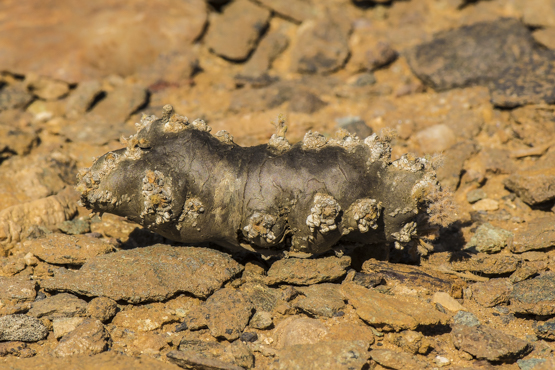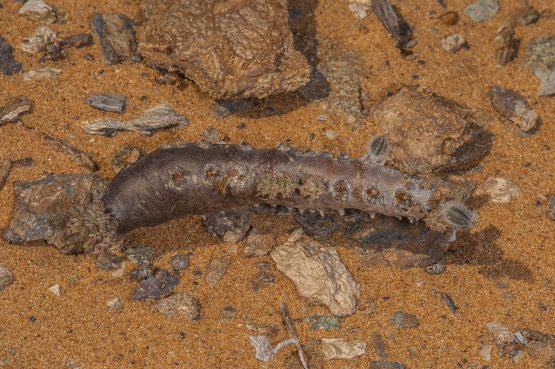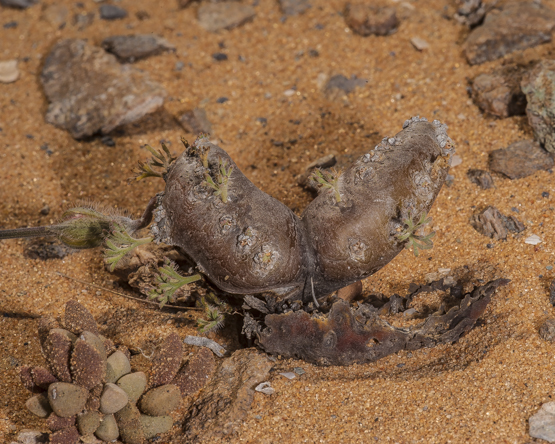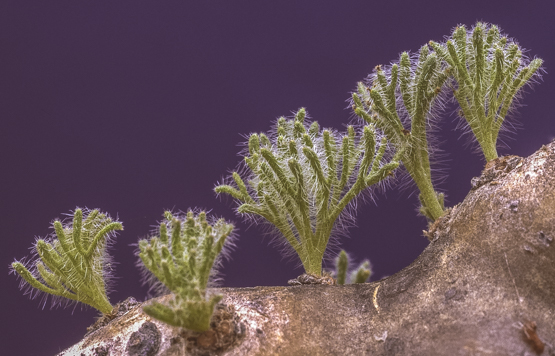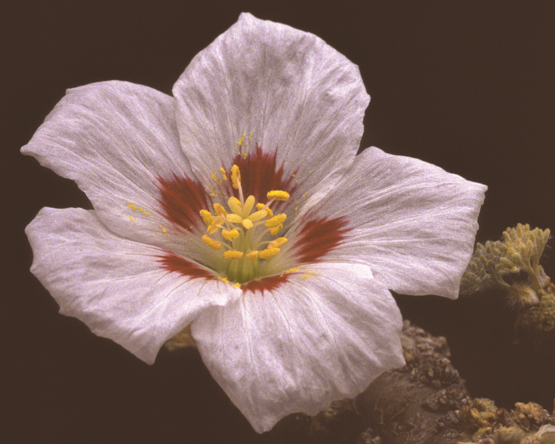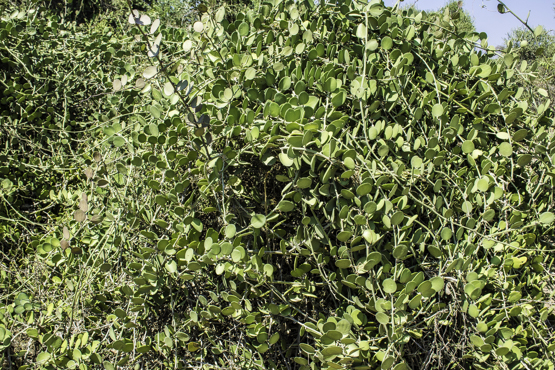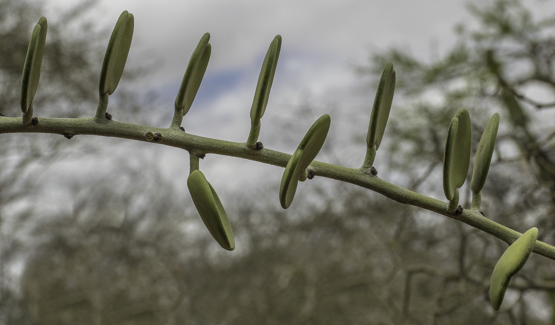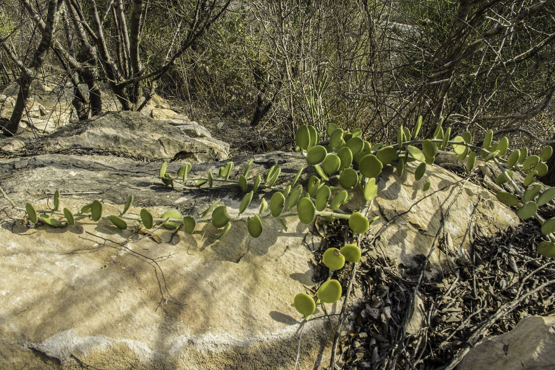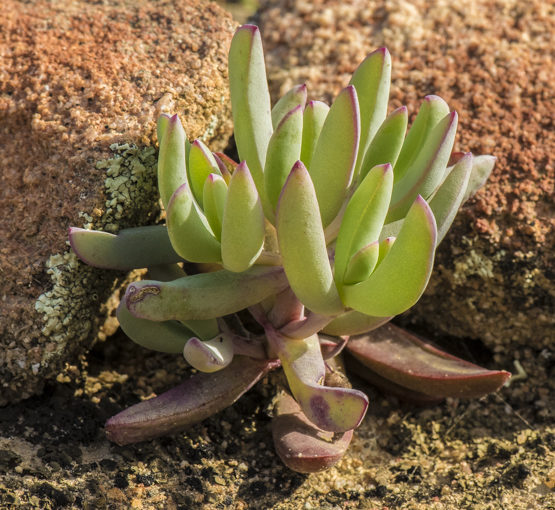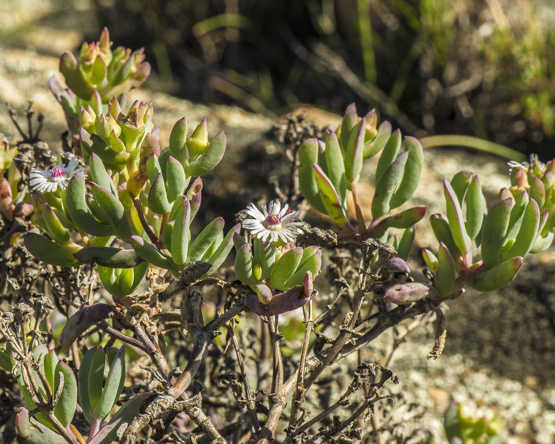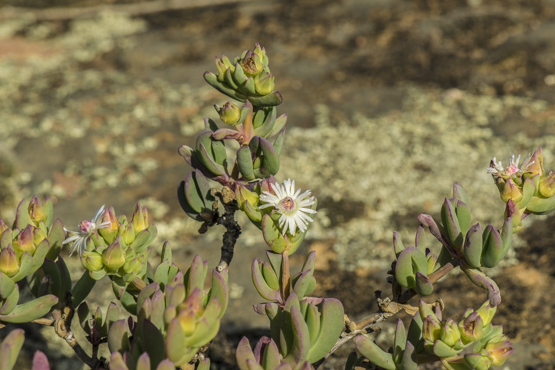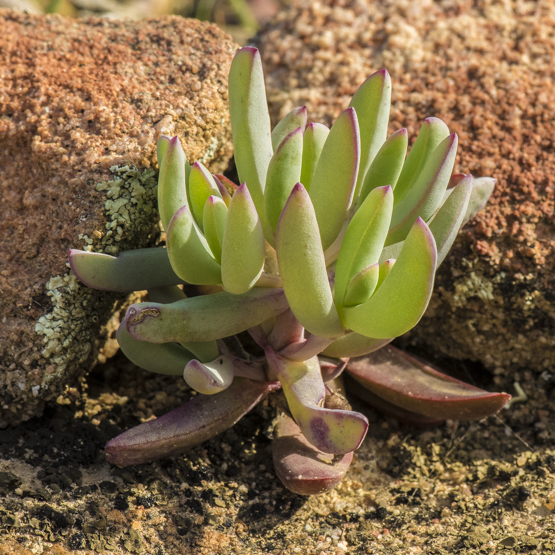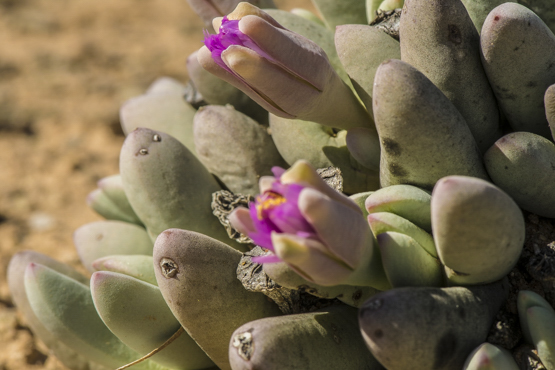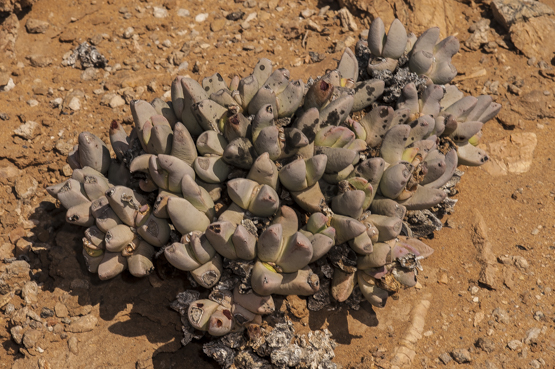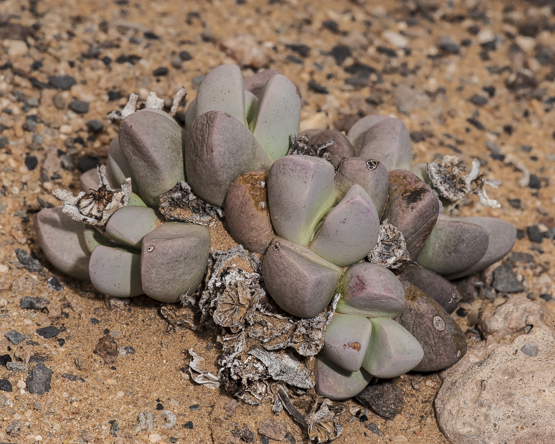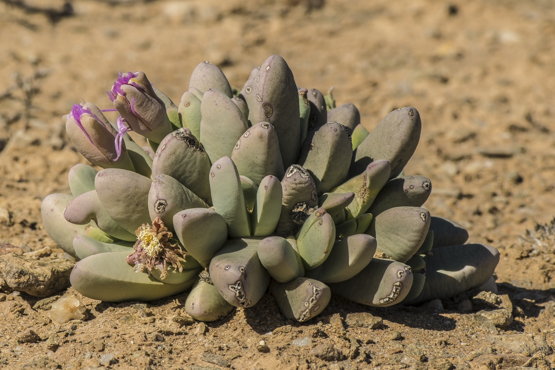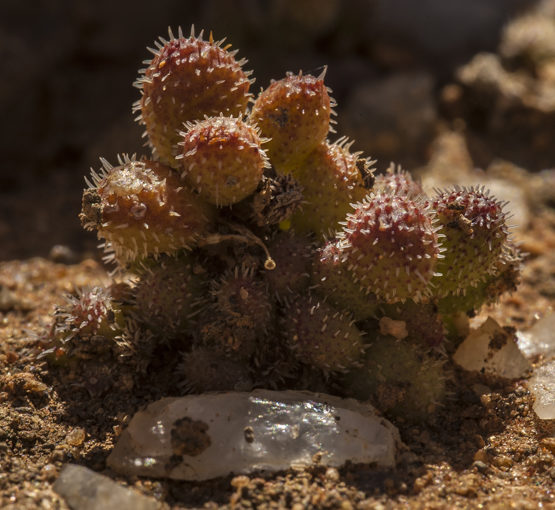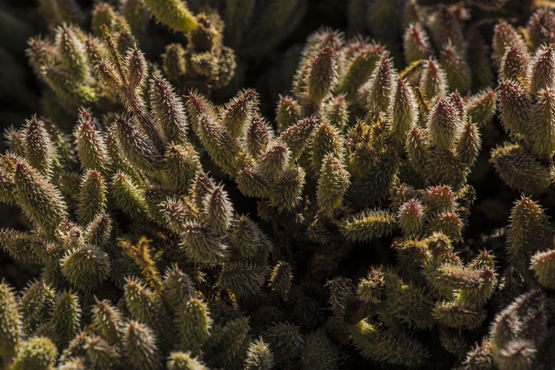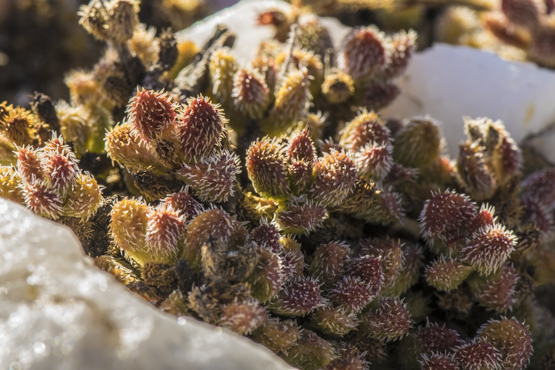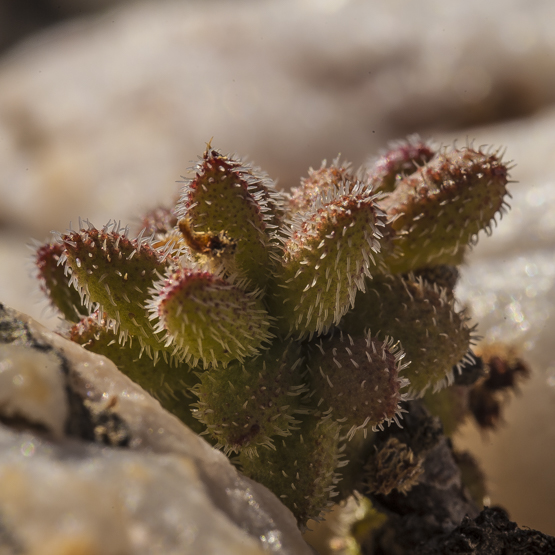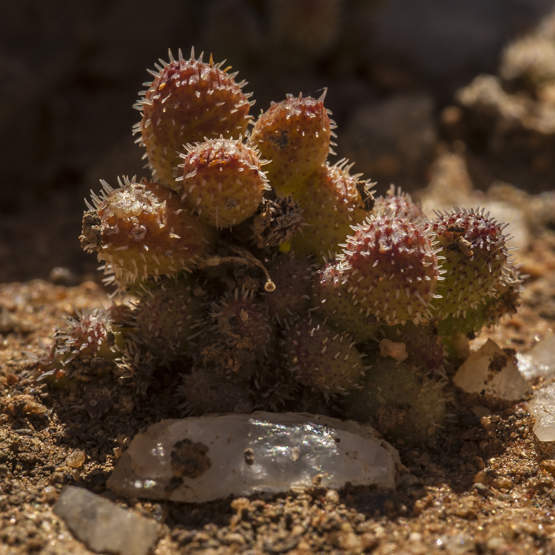One cannot help but wonder how these little beauties survive the cruel conditions in their homeland, a small area on both sides of the Orange river, some 10-60 km from the sea, where they grow on rocky ridges and in stabilised sandy places amid large sand dunes.
From November to May the plants are dormant and leafless and in this period they are often sand blasted by very strong winds and sometimes buried in sand drifts for weeks or even months.
Winter is the growing period, with most activity going one from June to September.
The plants have a deep, swollen root system and are up to 4 cm tall with one or a few horizontal branches; these are whitish to blackish-brown and 1-2 cm thick. The branches are spineless or have blunt remains of leaf stalks up to 0.6 cm long. Flowering may occur in most months (except Jan.- Febr. and May-June). The flowers are 2.5-3 cm across and white, pale pink or magenta with a dark red throat; rarely they are completely white.

